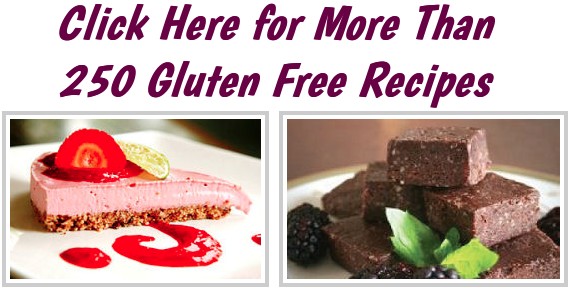Question by Tecpeds: How is gluten free wheat made?
I know there are many types like quinoa, buckwheat, millet amarnth ect.. which are all naturally gluten free but i have eaten wheat pasta which is gluten free how do they remove the gluten in wheat when it has gluten naturally unless im wrong. Thanks.
Best answer:
Answer by Zillah
How to Make Bread Gluten
By Susan Reynolds, eHow Contributor
Making wheat gluten bread is easy and fun to do with this simple recipe. Gluten is a type of protein found in almost all breads unless they are exclusively labeled “gluten free.” Extra gluten makes bread fluffier and lighter and helps it rise higher. Flour that contains a lot of protein will make very strong gluten, whereas low-protein flours are good for making pastries. You can make gluten balls at home using some simple ingredients like flour, water, and your own hands.
and “One gluten free unleavened bread recipe.”
Give your answer to this question below!

stupid fad that will end next year
It’s not possible to remove gluten from wheat flour and still keep the end result as flour. Gluten can be removed by a washing process but this results in a dough of gluten with the remainder of the wheat washed away. Gluten free products are made from flours other than wheat. You’d have to check the ingredients list or contact the manufacturer to ascertain which grain was used.
The gluten-free craze is something of a unique cultural phenomenon. Gluten is a protein found in wheat, barley, rye, etc. and is one of the components that makes bread dough stretchy and and baked bread chewy. For most people, gluten is a 100% safe, digestible, natural protein. But an estimated 0.5 – 1% of the population has a condition called Celiac’s Disease, which basically means that their immune systems see partially digested gluten as a threat and cause reactions in the small intestine similar to a severe food allergy (severe inflammation, stomach pain, diarrhea, severe gas buildup, etc.). However, Celiac’s Disease is different from a wheat allergy in that it only reacts to partially digested wheat *gluten*, where people allergic to wheat react to any form or part of wheat products.
Even though it only affects a very small percentage of the population, modern food production methods have made it very difficult for people with Celiac’s Disease to find gluten-free food, which until the gluten craze started, almost always meant avoiding any food with wheat in it. You’d be surprised how many processed foods contain wheat ingredients, such as Twizzlers licorice, pickles, blue cheese, salad dressings, and even sausages all frequently contain wheat gluten. For those living with this condition, having many gluten-free foods to choose from, especially when they go out to eat, really helps to make their lives easier and lessen the anxiety of possibly having a reaction to something.
It’s unclear what triggered the explosion in gluten-free products within the past couple of years, but early on, food companies looking to make their brand look healthy noticed that an increasingly large percentage of people who bought gluten-free products only bought them under the incorrect assumption that gluten-free made the food healthier and/or less fattening. Simply by labeling their gluten-free products as such began increasing sales, and as the number of gluten-free products began rising, so did the hype surrounding the mysterious idea of gluten-free food. Today, estimates vary on what percentage of the gluten-free market is being bought mistakenly by (non-Celiacs) people presuming that it’s good for them, but it is safe to say that it is a very large percentage, and that the gluten-free boom would not have happened if it weren’t for this widespread misinformation.
So unless you have Celiac’s Disease or some other kind of wheat allergy, gluten is completely safe and healthy to eat in moderation. Gluten is NOT any more fattening than other wheat ingredients (though eating a lot of refined carbohydrates IS!) and is NOT dangerous or “bad” for the average person. In fact, some gluten-free foods are actually LESS healthy than the original foods because the recipes have to be reformulated to make up for the lack of gluten, which sometimes means adding one or more ingredients that are slightly less healthy substitutes. But do keep in mind that this recent trend has been enormously helpful to people with Celiac’s Disease, who have probably spent most of their lives jumping through hoops to find safe food to eat every time they’re hungry, so even if for the most part it’s all just a way for food companies to make money from misinformed consumers, it has benefited certain people and should be considered a good thing for that reason.
So if you don’t have Celiac’s Disease, don’t pay extra for gluten-free. It won’t affect you either way!
LOL there’s no such thing as “gluten free wheat”.
Plants like quinoa, millet, buckwheat etc are naturally, genetically gluten free.
No one made that that way, they just are.
Gluten free pasta is normally made out of RICE.